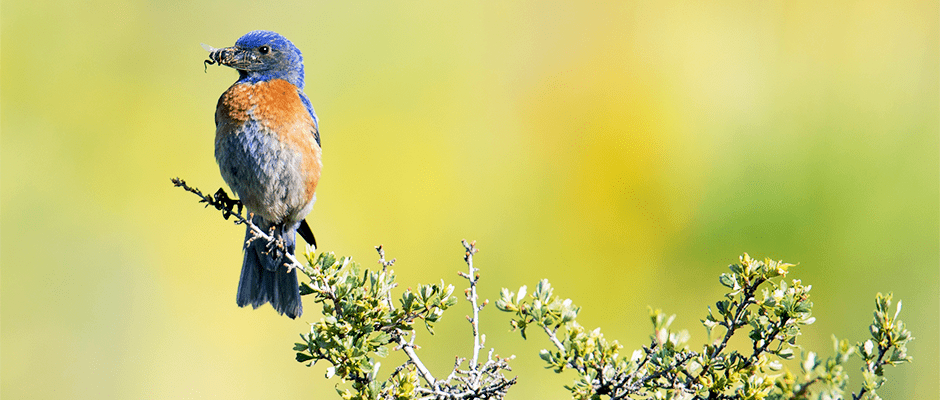Share this article
It’s a win-win for bluebirds and vineyards
Putting up nest boxes in vineyards can help provide habitat for bluebirds while simultaneously helping growers keep pests off their grapes.
In a new study published in The Auk: Ornithological Advances, researchers examined DNA in bird feces to determine which insects western bluebirds (Sialia mexicana) were eating.
“Molecular scatology research had only been done a few times and was fairly new in the field and all the research had been done on mammals,” said lead author of the study Julie Jedlicka, an assistant professor of biology at Missouri Western State University. “I thought it would be great if we could apply that to birds and move forward in that direction.” In 2011, Jedlicka created a methodology to do so and applied it to her most recent study.
As part of their research on three vineyards in Napa Valley, Calif, Jedlicka and her colleagues caught the birds in mist nets. As they removed the birds from the nets, they often immediately provided a fecal sample. “I don’t know if you can say we scared to poop out of them or what,” Jedlicka joked. The team also collected fecal samples from younger chicks simply by picking them up and collecting droppings underneath them.
The team then stored the fresh samples in little tubes and placed them on ice before transporting them to University of California, Berkeley. In the lab, they extracted DNA from the samples and matched them to arthropod species in a Barcode of Life Database to determine what the bird had eaten.
Jedlicka and her team were surprised by some of their findings. For example, they found that mosquitos were the most common arthropod showing up in the samples. “This was an unrecorded prey item we didn’t know they ate before this,” she said. In the past, scientists relied on museum specimens to determine what birds were eating. However, mosquitos don’t have a hard exoskeleton, which likely causes them to degrade quickly in birds’ stomachs, causing them to go unrecorded. “So we had no idea, and now we know it’s actually one of the most common food items that they’re eating,” she said.
Further, the team found bird blow fly DNA in the fecal samples, an ectoparasite that often affect birds in nest boxes by sucking the blood out of nestlings. Because the birds were eating the flies, it is possible that they are fighting back against these ectoparasites, Jedlicka says.
Overall, the researchers found the vast majority of arthropods the birds were consuming were arthropods that eat plants. “Growers don’t want them in their vineyards and don’t want them to eat their winegrape plants,” she said. Only three percent of the insects the birds were eating were potentially beneficial to the vineyards.
California vineyards are expanding into natural oak woodlands leaving fewer habitats for birds. This research shows putting up nest boxes can benefit not only the species by providing habitat but also vineyards by managing insects that damage them. “I think it’s a wonderful potential win-win,” Jedlicka said.
Header Image: ©Mick Thompson








